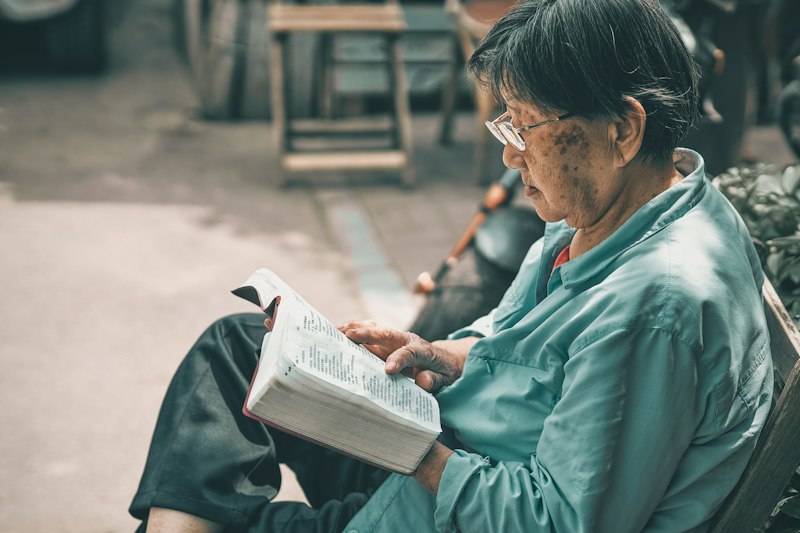Chinese Jade Symbolism: Gemstone Beliefs in Artistic Expressions
Have you ever wondered about the significance of Chinese jade in artistic expressions? This exquisite gemstone holds a special place in Chinese culture, representing a myriad of beliefs and symbolisms. Let’s delve into the fascinating world of Chinese jade and explore its cultural importance.
In Chinese tradition, jade is revered as the “Stone of Heaven.” It has been cherished for over 5,000 years, recognized not only for its aesthetic beauty but also for its spiritual qualities. Jade is believed to possess protective and healing powers, promoting harmony and balance in one’s life. It is considered a bridge between the physical and spiritual realms, connecting humans with the divine.
The symbolism associated with Chinese jade goes beyond its mystical properties. In ancient China, jade was an emblem of virtue and nobility. It was considered a symbol of imperial power and often reserved for emperors and high-ranking officials. Carvings made from jade depicted mythical creatures, such as dragons and phoenixes, signifying strength, prosperity, and good fortune. These intricately crafted jade artifacts were seen as a reflection of the ruler’s authority and wisdom.
Jade also holds deep symbolic meaning in Chinese mythology. According to legend, jade is formed from the essence of heaven and earth and is said to contain the essence of life itself. It is believed to bring luck, longevity, and prosperity to those who possess it. Jade carvings often depict animals like turtles, symbolizing longevity, and bats, representing happiness and good fortune.
In addition to its spiritual and symbolic significance, jade played a crucial role in ancient Chinese burial rituals. Jade burial suits, consisting of thousands of jade pieces stitched together, were created to accompany the deceased on their journey to the afterlife. These suits were believed to protect and guide the soul, ensuring a peaceful transition.
Today, Chinese jade continues to be highly valued and sought after worldwide. Its timeless beauty, cultural significance, and intricate craftsmanship make it a treasured gemstone in art and jewelry. Whether worn as a personal adornment or displayed as a work of art, Chinese jade serves as a tangible link to China’s rich history and profound belief system.
Chinese jade represents more than just a beautiful gemstone. It embodies the essence of Chinese culture, spirituality, and artistic expressions. From its deep-rooted symbolism to its role in ancient rituals, jade has left an indelible mark on Chinese history. So, next time you encounter this mesmerizing gemstone, take a moment to appreciate the centuries-old beliefs and traditions that it encapsulates.
Unveiling the Mystique: Exploring the Symbolic Power of Chinese Jade in Artistic Creations
Have you ever wondered why Chinese jade holds such a mesmerizing allure? This magnificent gemstone, with its vibrant green hues and rich historical significance, has captivated artists and collectors for centuries. In this article, we delve into the symbolic power of Chinese jade and its profound influence on artistic creations.
Chinese jade, known as “yu” in Mandarin, encompasses both cultural and spiritual significance in Chinese tradition. It is revered as a symbol of purity, nobility, and immortality. The stone’s enduring beauty and durability have made it a favored medium for sculptors and craftsmen throughout history.
The mystique surrounding Chinese jade lies not only in its physical attributes but also in the beliefs associated with it. According to ancient Chinese philosophy, jade represents the essence of heaven and earth, embodying the harmony between Yin and Yang energies. It is believed to possess protective qualities, warding off evil spirits and bringing good fortune to its wearer.
Artistic creations featuring Chinese jade are infused with symbolism and intricate craftsmanship. Jade carvings often depict mythical creatures, such as dragons and phoenixes, symbolizing power, prosperity, and renewal. Intricately carved jade pendants, bracelets, and other jewelry pieces are treasured for their aesthetic appeal and auspicious connotations.
Moreover, Chinese jade has played a significant role in imperial art. Emperors of ancient China considered jade as a symbol of their divine right to rule. Exquisite jade artifacts adorned imperial palaces, reflecting the ruler’s authority and connection to the heavens.
In contemporary times, Chinese jade continues to inspire artists and designers worldwide. Its unique color variations and translucency make it a sought-after material for jewelry, sculptures, and decorative objects. From delicate jade earrings to intricately carved jade statues, each piece showcases the skillful craftsmanship and reverence for this cherished gemstone.

From Ancient Traditions to Modern Interpretations: How Chinese Jade Continues to Inspire Artistic Expressions
Chinese jade has a rich history that spans centuries, captivating artists and art enthusiasts alike with its beauty and cultural significance. From ancient traditions to modern interpretations, this precious gemstone continues to inspire artistic expressions in various forms.
The allure of Chinese jade can be traced back to ancient times when it was considered a symbol of status, power, and immortality. Emperors and nobles adorned themselves with jade jewelry, believing it possessed mystical properties and brought good fortune. The craftsmanship involved in carving jade was highly esteemed, with intricate designs and motifs reflecting the celestial world, nature, and mythical creatures.
Over the years, the appreciation for Chinese jade and its artistic potential has expanded beyond traditional beliefs. Contemporary artists have embraced the medium, infusing it with their own interpretations and pushing the boundaries of creativity. Jade sculptures, paintings, and jewelry created by skilled artisans showcase the versatility and timeless elegance of this gemstone.
One of the reasons Chinese jade continues to inspire artistic expressions is its inherent symbolism. Each shade of jade carries specific meaning, such as the vibrant green representing life, growth, and harmony. Artists harness these symbolic associations to convey deeper emotions and narratives in their works. Whether through a delicate jade sculpture depicting a blossom or a bold statement necklace showcasing the natural patterns of jade, the artistic possibilities are endless.

Chinese jade’s enduring influence on artistic expressions is a testament to its timeless appeal. From ancient traditions rooted in belief to modern interpretations driven by creativity, this gemstone continues to captivate artists and audiences worldwide. Its cultural significance, symbolism, and aesthetic qualities make it a medium that artists can’t resist exploring. Whether it’s a meticulously carved sculpture or a contemporary jewelry piece, Chinese jade remains an endless well of inspiration for artistic expression.
The Green Gem of Serenity: Understanding the Spiritual Significance of Chinese Jade in Art
Have you ever marveled at the exquisite beauty of Chinese jade? This captivating gemstone has long been revered for its spiritual significance and artistic allure. In the realm of art, Chinese jade holds a special place, representing tranquility, harmony, and prosperity. Let’s delve into the depths of this green gem and unravel its intriguing symbolism.
Chinese jade, known as “Yu,” has a rich history dating back thousands of years. It is considered a sacred stone in Chinese culture, embodying virtues such as wisdom, purity, and compassion. Its alluring green hue, reminiscent of nature’s lushness, evokes a sense of serenity and balance.
In traditional Chinese art, jade plays a vital role, adorning sculptures, jewelry, and various decorative objects. The craftsmanship involved in carving jade is truly remarkable. Skilled artisans meticulously shape this precious stone into intricate designs, often depicting mythical creatures, flowers, or auspicious symbols.
The symbolism associated with jade runs deep in Chinese philosophy. It represents the integration of heaven and earth, signifying the harmonious coexistence between humanity and nature. Just as jade is formed through intense pressure over time, it is believed that human character can be refined and perfected through life’s challenges and experiences.
Moreover, the spiritual beliefs surrounding Chinese jade extend beyond aesthetics. It is considered a protective talisman, warding off negative energy and bringing good fortune to the wearer. Jade is also believed to have healing properties, promoting physical well-being and emotional balance.
In Chinese culture, gifting jade holds great significance. It is seen as a gesture of goodwill, expressing blessings of longevity, prosperity, and happiness. Jade artifacts are cherished heirlooms passed down through generations, symbolizing the enduring bonds of family and heritage.
To fully appreciate the splendor of Chinese jade, one must embrace its spiritual essence. It serves as a reminder to seek inner peace, find harmony with the world around us, and nurture our connection with the divine. In the realm of art, jade continues to mesmerize, captivating hearts and minds with its timeless beauty and profound symbolism.
Chinese jade stands as a green gem of serenity, transcending mere aesthetics to convey a profound spiritual significance. Its presence in traditional Chinese art speaks volumes about the culture’s reverence for nature, harmony, and personal growth. Whether worn as jewelry or admired as a work of art, jade holds the power to inspire and uplift, reminding us of the enduring beauty that lies at the intersection of art and spirituality.
Beyond Beauty: Chinese Jade as a Symbol of Prosperity and Good Fortune in Artistic Imagery
Chinese jade has long been revered as a symbol of prosperity and good fortune in artistic imagery. Its significance goes beyond its inherent beauty, encompassing cultural beliefs and historical context that have shaped its prominence.
Jade holds a special place in Chinese culture, representing virtues such as purity, longevity, and wisdom. Its smooth texture and lustrous appearance make it highly desirable for artisans and collectors alike. From ancient times to the present day, jade has been utilized in various forms of artwork, including sculptures, jewelry, and decorative objects.
In traditional Chinese symbolism, the color of jade holds significant meaning. Green jade, in particular, is associated with wealth and abundance. It is believed to attract positive energies and bring good luck to its owners. The natural patterns and variations found in jade are seen as reflections of the harmony and balance present in nature, further enhancing its symbolic value.

Another popular subject in jade art is the mythical creature known as the phoenix. As a symbol of rebirth and immortality, the phoenix holds great significance in Chinese mythology. Jade sculptures of phoenixes are regarded as auspicious symbols, signifying prosperity, happiness, and marital bliss. Such artworks are often given as gifts on special occasions, such as weddings or anniversaries, to bestow blessings upon the recipients.
Chinese jade embodies more than just its aesthetic allure. Its symbolic association with prosperity and good fortune has made it an integral part of Chinese artistic imagery. From dragons to phoenixes, jade artworks convey the rich cultural heritage and timeless beliefs of the Chinese people. Whether displayed in homes or worn as jewelry, Chinese jade continues to captivate hearts and minds, evoking a sense of awe and admiration for its enduring symbolism.


